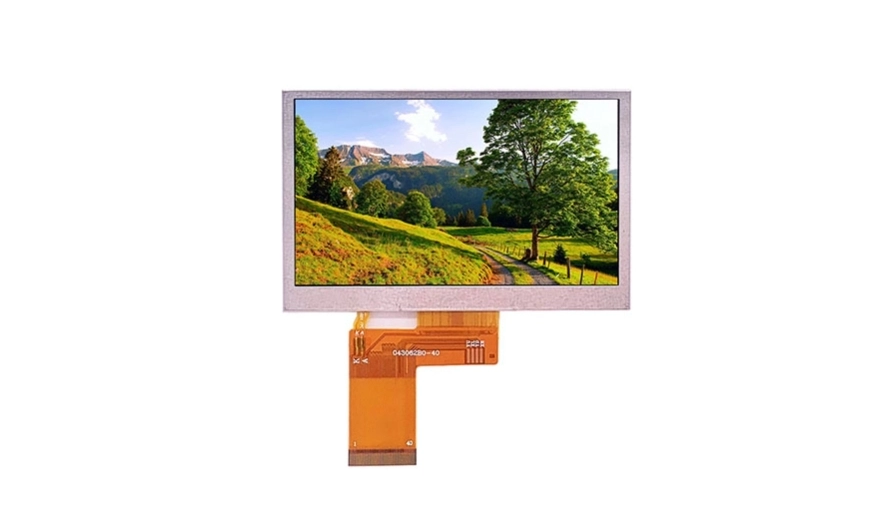Views: 241 Author: Reshine-Display Publish Time: 2024-05-24 Origin: Site









In the fast-paced world of electronics and displays, MIPI (Mobile Industry Processor Interface) LCD displays have become a crucial component for a wide range of devices, from smartphones and tablets to automotive infotainment systems and industrial interfaces. However, as with any complex technology, MIPI LCD displays can encounter various issues that can hinder their performance. This blog post aims to provide a comprehensive guide on how to troubleshoot common issues with MIPI LCD displays, ensuring optimal performance and user experience.
Before delving into the troubleshooting process, it's essential to have a basic understanding of MIPI LCD displays. MIPI is a standard for mobile device interfaces that allows for high-speed data transfer between components such as processors, sensors, and displays. MIPI LCD displays utilize this standard to deliver crisp, vibrant visuals while maintaining low power consumption.
Let's take a look at some of the most common issues encountered with MIPI LCD displays:
●No Display or Black Screen
●Incorrect Colors or Distorted Images
●Intermittent Display or Flickering
●Slow Response Times
●Power Consumption Issues
Now, let's dive into the troubleshooting process:
●Check Cable Connections: Ensure that all cables connecting the MIPI LCD display to the host processor are securely connected and in good condition. Damaged or loose cables can lead to signal loss or interference.
●Inspect the Connector: Look for any physical damage to the MIPI connector on both the display and the host processor. Damaged connectors can cause poor signal transmission.
●Check Power Supply: Verify that the MIPI LCD display is receiving the correct voltage and current from the power supply. Incorrect power levels can affect display performance.
●Check Driver Installation: Ensure that the appropriate drivers for the MIPI LCD display are installed on the host processor. Outdated or incorrect drivers can lead to compatibility issues.
●Verify Configuration Settings: Check the configuration settings for the MIPI LCD display in the device's software or BIOS. Incorrect settings can affect display performance.
●Update Operating System: Ensure that the operating system on the host processor is up to date. Outdated operating systems may not support the latest MIPI LCD display technologies.

●Use a Signal Analyzer: Connect a signal analyzer to the MIPI interface to monitor the signal quality. Look for any signs of signal loss, interference, or noise.
●Check Clock Synchronization: Ensure that the clock signals between the MIPI LCD display and the host processor are synchronized. Clock synchronization issues can lead to display problems.
●Inspect EMI Shielding: Check the EMI (electromagnetic interference) shielding on the MIPI LCD display and host processor. Poor EMI shielding can allow interference to affect the MIPI signal.
●Temperature: Ensure that the MIPI LCD display is operating within its specified temperature range. Extreme temperatures can affect display performance.
●Humidity: Check the humidity levels around the MIPI LCD display. Excessive humidity can lead to corrosion or condensation, which can damage the display.
●Vibration and Shock: Ensure that the MIPI LCD display is mounted securely and protected from excessive vibration or shock. These factors can damage the display or affect its performance.
●Test Individual Components: If the issue persists after checking the hardware connections, software configuration, signal integrity, and environmental factors, it may be necessary to test individual components. This can be done by replacing components one by one and testing the display after each replacement.
●Contact Manufacturer: If component failure is suspected, contact the manufacturer of the MIPI LCD display for further assistance. They may be able to provide replacement parts or advice on how to proceed.
For more complex issues, advanced troubleshooting techniques may be required:
●Use a Logic Analyzer: A logic analyzer can provide a detailed view of the MIPI data transfer, allowing you to identify any errors or inconsistencies in the data transmission.
●Capture and Analyze Traces: Utilize tracing tools to capture and analyze MIPI traces. This can help identify timing issues, protocol violations, or other problems that may be difficult to detect using traditional troubleshooting methods.
●Consult Experts: If you're unable to resolve the issue using the above methods, consider consulting experts in MIPI technology or LCD displays. They may be able to provide specialized advice or solutions.
To minimize the occurrence of issues with MIPI LCD displays, consider the following prevention measures:
●Regular Maintenance: Perform regular maintenance checks on the MIPI LCD display and its associated components. This includes cleaning the display, checking cable connections, and verifying power supply levels.
●Use Quality Components: Ensure that you're using quality components from reputable manufacturers. Low-quality components can lead to increased failures and reduced performance.
●Follow Manufacturer Recommendations: Adhere to the manufacturer's recommendations for installation, configuration, and operation of the MIPI LCD display. This can help ensure optimal performance and reduce the risk of issues.
Troubleshooting common issues with MIPI LCD displays requires a combination of hardware, software, and environmental checks. By following the steps outlined in this blog post, you can identify and resolve most issues, ensuring optimal performance and user experience. Remember to regularly maintain your MIPI LCD display and use quality components to minimize the occurrence of issues. If you encounter complex issues, consider utilizing advanced troubleshooting techniques or consulting experts in MIPI technology or LCD displays.
Boosting Urban Mobility: Making Public Transport the Go-To Choice in Your City
How Do You Troubleshoot Common Issues with MIPI LCD Displays?
What Are the Key Technical Specifications to Consider When Selecting a MIPI LCD Display?
What Are the Pros and Cons of Using LCD Displays for Gaming?
What Are the Environmental Impacts of Manufacturing LCD Displays?
How Does the Viewing Angle Affect the Quality of LCD Displays?